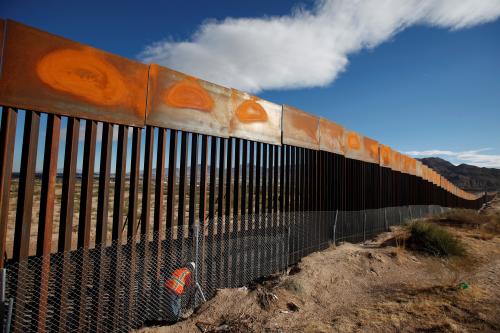The United States is in the midst of an intense debate over its borders. Immigration is approaching historic levels, and an all-time high of 12 million people—one third of the foreign-born population—are in the United States illegally. Fifty percent of them are from Mexico, and another 30 percent are from elsewhere in Central and South America. Most have entered across the 1,950-mile U.S.-Mexican border. In recent months, the two houses of the U.S. Congress have each passed immigration reform bills. The differences between the two versions are yet to be resolved, but they do have at least one important thing in common: Both mandate that hundreds of miles of new physical barriers be added to the existing 125 miles of fence along the border.
That remote, often forbidding border has now become the focus of a symbolic struggle over how Americans see themselves in the world. But symbols are open to interpretation. To many Americans, border barriers promote national security. To others, they smack of fortification and militarization by empire-building Washington bureaucrats. Meanwhile, market-oriented conservatives at the Wall Street Journal and human rights activists at the American Civil Liberties Union have both denounced the border fence as a new “Berlin Wall”—though its purpose is to keep foreign nationals out, not citizens in.
In this controversy, few have bothered to consider the mundane, physical details of the border fence itself. But when one looks at it closely, one encounters neither a particularly imposing structure nor a gold-plated military project. Instead, it is a jerry-rigged example of American ingenuity that reflects not merely ambivalence about immigration but also the competing objectives and compromises characteristic of America’s decentralized and fragmented political system. Moreover, immigration control alone was never the driving force behind the building of the barriers. Instead, border-control policies have had to piggyback on other overriding national concerns. The result is a fence that is neither as draconian and militarized as critics claim, nor as effective as supporters would like.
View Full Opinion
Registration required



Commentary
Op-edHow Not to Build a Fence at the U.S.-Mexican Border: America’s Conflicted Attitudes Toward Immigration
September 1, 2006